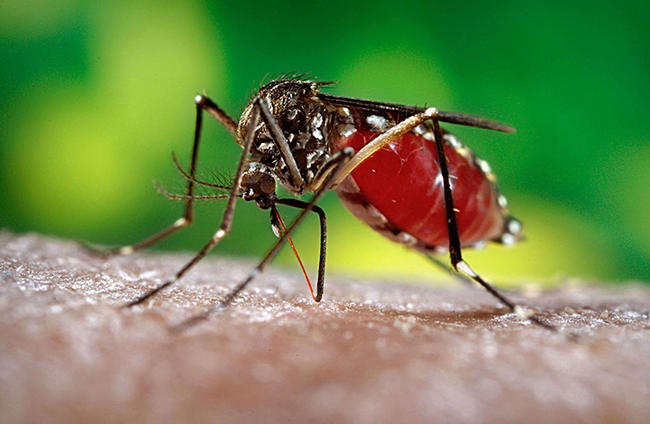
The species has now reached at least 17 California counties and its successful spread may be linked to its resistance to pyrethroids, according to newly published UC Davis research examining genetic markers of resistance at five state locations.
The work, published in the current edition of Parasites & Vectors, a BioMed Central open-access medical journal, focuses on “determining how informative well-established genetic markers of resistance to pyrethroids are in predicting the resistance phenotype of individual mosquitoes of Aedes aegypti within a population,” said Attardo, the lead author.
“Specifically, we generated mosquito colonies from invasive A. aegypti populations from four locations in the Central Valley (Dinuba, Clovis, Sanger and Kingsburg) and from collections in the Greater Los Angeles Area,” he said. “Mosquitoes from these populations have all demonstrated resistance to pyrethroid-type insecticides and we think this may be part of the reason why these mosquitoes have been so successful in spreading throughout California.”
A. aegypti transmits such viruses as dengue, Zika, chikungunya, and yellow fever. Despite California's aggressive surveillance and treatment efforts, this species presents a “significant challenge to local control agencies,” the nine-member team wrote in their research paper, “Frequency of Sodium Channel Genotypes and Association with Pyrethrum Knockdown Time in Populations of Californian Aedes aegypti.“
The paper is online and publicly accessible at https://bit.ly/3vmUxXR.
“What was interesting was that while all the mosquitoes from California show resistance to pyrethroids, there is a lot of variability from one individual to the next in terms of the level of resistance, even when they are carrying genetically identical resistance mutations,” Attardo said. “In particular, there seem to be two levels of resistance in these populations. The two levels seem to represent a resistant group and a super resistant group. However, the proportions of resistant/super-resistant differ in the sampled mosquitoes from population to population.”
Of particular interest was that mosquitoes carrying the resistance mutations at all five genetic locations were very resistant, he said. “However, there was also a large amount of unexplained variability in terms of the knockdown phenotypes demonstrated by mosquitoes of the same age and rearing conditions. We compared the knockdown times of mosquitoes positive for all five resistance mutations from different populations and found that these mutations account for only a proportion of the observed level of resistance. We believe that the unexplained variability is likely being mediated by the presence or absence of an undefined resistance mechanism.”
Although A. aegypti was first detected in California in 2013, researchers believe that its arrival involved multiple introductions. Populations in Southern California are thought to have crossed the border from Mexico, while Central Valley populations may have been introduced, in part, from the southeastern United States.
“Upon detection in 2013, the Consolidated Mosquito Abatement District implemented an integrated vector control management strategy which involved extensive public education, thorough property inspections, sanitation, insecticide treatment at larval sources and residual barrier spraying with pyrethroids,” the authors wrote. Despite their efforts, the species successfully overwintered and continued to spread, implicating that it arrived in California with genetic mutations “conferring resistance to the type I pyrethroid insecticides applied for vector control in California.”
The co-authors include former UC Davis mosquito researcher Yoosook Lee, now at the University of Florida-Florida Medical Entomology Laboratory, Vero Beach; research entomologist Anthony Cornel and staff research associate Katherine Brisco of the Mosquito Control Research Laboratory, Kearney Agriculture and Extension Center and UC Davis Department of Entomology and Nematology; and Lindsey Mack, Erin Taylor Kelly, Katherine Brisco, Kaiyuan Victoria Shen, Aamina Zahid, and Tess van Schoor, all with the UC Davis Department of Entomology and Nematology.
For more information and photos, see news story on "UC Davis Researches Examine Pyrethroid Reistance in Spread of Aedes aegypti," on the UC Davis Department of Entomology and Nematology's website.
Attached Images:
